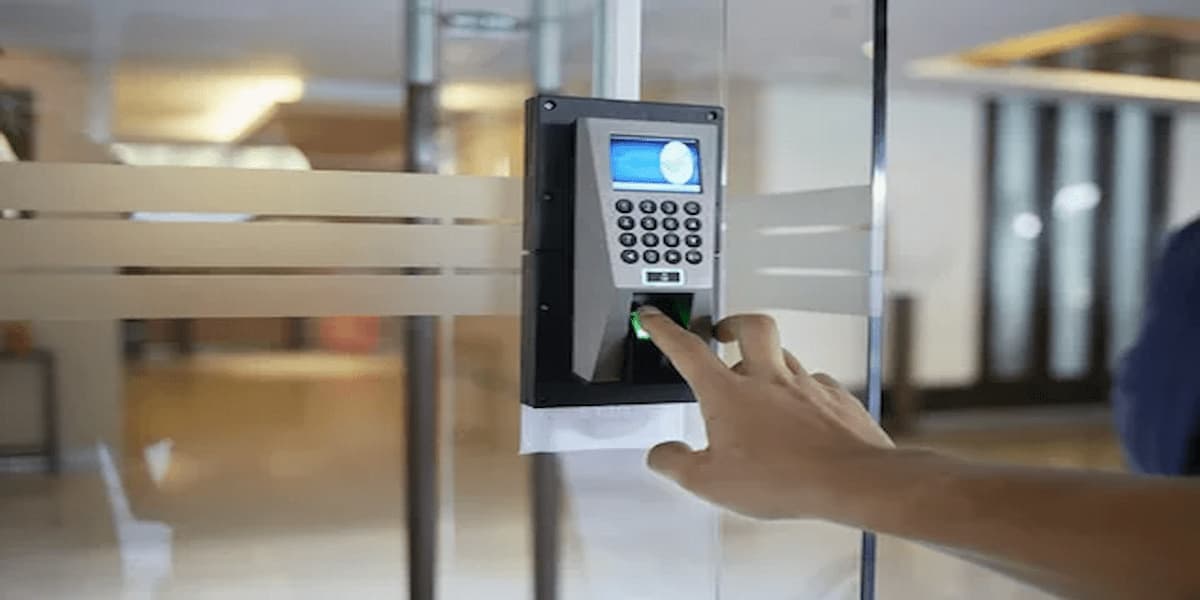


Exploring future trends shaping the evolution of smart and secure access control systems.
There is nothing new about access control. For as long as people have had doors, there has been someone who guards them or has keys to lock them. The technology has evolved into pin pads, card/fob readers, electric locks, and video monitoring. Access control systems can be deployed in various ways to limit access to certain places and things only to those who are authorized, depending on the level of security required.
In recent years, new technologies have emerged as businesses demand more secure solutions – keys, PINs, and cards do not meet the current security levels that enterprises require. Nowadays, the most advanced form of access control is biometrics – the unique characteristics of each person, such as their fingerprints, faces, eyes, or voices.
Even though traditional means may limit access to those who are authorized, the key, fob, card, or PIN is just a physical extension of a person, and that’s why it can be stolen, lost, or shared.
Commercial Access Control Systems are being widely used for security purposes.
Remote management
Since early 2020, remote management has remained an essential part of business, allowing businesses to keep their buildings secure even when no one is in the building, and allowing hybrid work models to be productive.
Access control technology will continue to be a trend in 2022 as new tools and technologies are being developed to make remote management easier and more effective. In an era when more companies are allowing their employees to work from home or follow flexible schedules, security management remains an important part of keeping the workplace safe, secure, and healthy.
Security management and remote access allow both larger and smaller companies to remain nimble and flexible, allowing teams to complete day-to-day tasks without having to physically be on-site. A remote door unlock feature makes it easy to let employees, vendors, and contractors into the building when they forget their credentials. Access to real-time activity reports from remote management also gives organizations the ability to make adjustments on the fly and automate many daily tasks. Security is not compromised because they aren’t on-site.
The cloud is here to stay
It is important to note that the cloud is one of the most important trends in physical access control. Flexera’s study shows that 92% of companies today are using the cloud for their systems, and security is beginning to move from on-premises to cloud-based access control systems. A cloud-based infrastructure offers many benefits for organizations, from centralized management of multiple sites to better response to breaches and security incidents.
Cloud-based systems come with tools that help admins and security teams sort, view, and process data more efficiently in one central location. A legacy system, for example, usually manages access control and security separately for each building or site.
Automation:
Access control technology trends such as automation are underutilized. Integrated access control systems were popular access control technology trends in the past, but new developments and access control technology trends have opened the door to automating operations. Automation makes operations more efficient by connecting disparate building systems including access control, parking management, room scheduling, visitor management, and tenant experience apps. By integrating 5 different building systems, building managers can control all 5 from one interface instead of logging into and configuring them individually. As well as providing a better workplace experience, building management systems can also increase ROI across an entire enterprise.
Seamless mobile experience:
Access control will increasingly be reliant on mobile technology, in addition to a growing remote workforce. Mobile badges will continue to replace traditional key cards and fobs in 2022 as physical access control trends shift to digital. Mobile badges provide visual identity verification without requiring the use of another credential. By integrating digital and physical identities, organizations can strengthen security without sacrificing convenience. In addition, mobile badges can be customized and include identifiers like title, group, or vaccination status.
Touchless access control technology:
The pandemic led to a seismic shift in our perception of touch from touch-based technologies a few years ago. Today, touchless automatic entry systems are a necessity for virtually every space. Besides being more hygienic, touchless access control trends are more convenient and modern. Now that more systems are using mobile and digital technologies, it is easier to implement touchless entry.
